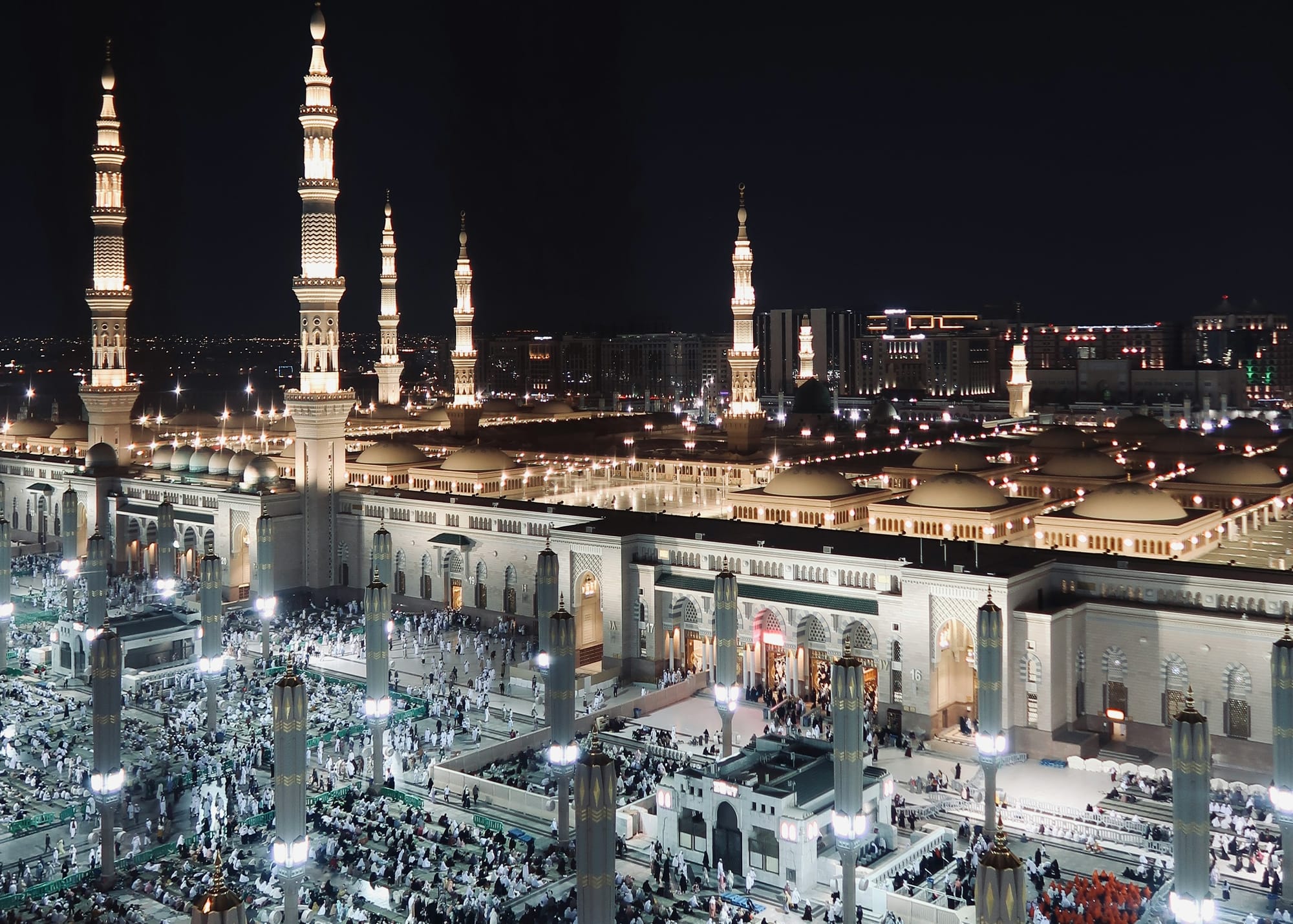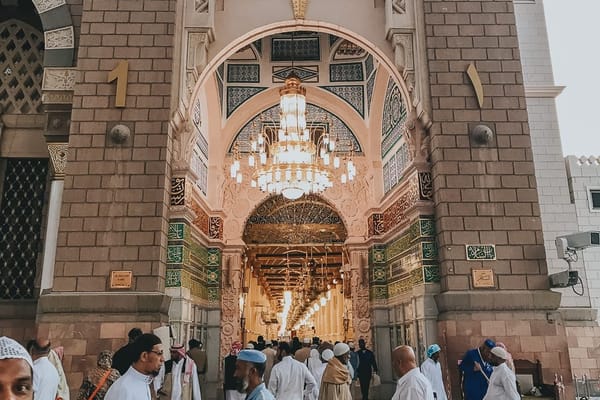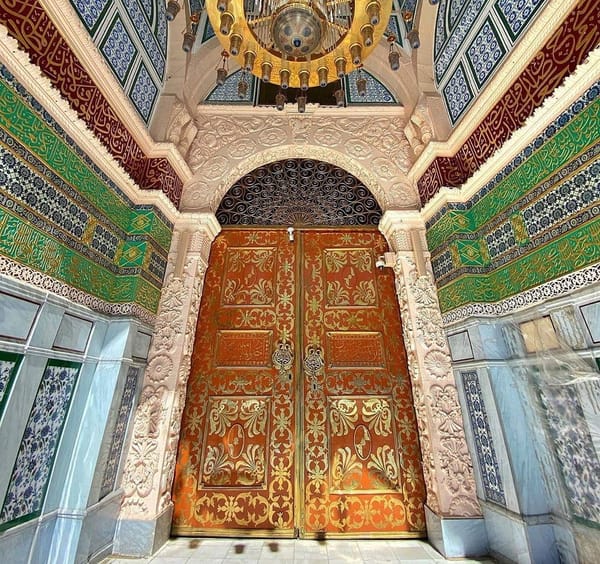The Prophet's (ﷺ) Mosque, known as Masjid Nabawi, is the heart of Madinah and the second most sacred places in Islam. Every year, millions of pilgrims pass through its majestic gates, each rich in history and spiritual significance. Among them, Al Salam Gate (also called Salam Gate of Madinah) holds a special place.
In this updated guide, we explore the complete list of important gates at Masjid Nabawi, focusing especially on Salam Gate, and share important visitor tips, including how you can make your experience smoother by using Madinah's popular Hop-On Hop-Off Bus service.
How Many Gates Are There in Masjid Nabawi?
Today, the Prophet's Mosque has 42 main gates, providing access to the main building complex. The gates of the older, first Saudi expansion have been incorporated into the modern structure. Each gate is numbered and often named after significant figures in Islamic history.
The Importance of the Gates at Masjid Nabawi
- Spiritual Entry: Certain gates, like Bab Al-Salam, are considered spiritually rewarding entry points.
- Architectural Marvels: From Ottoman-era designs to modern Islamic architecture, each gate tells a story.
- Ease of Movement: The gates help organize the flow of worshippers, with designated entries for men and women.
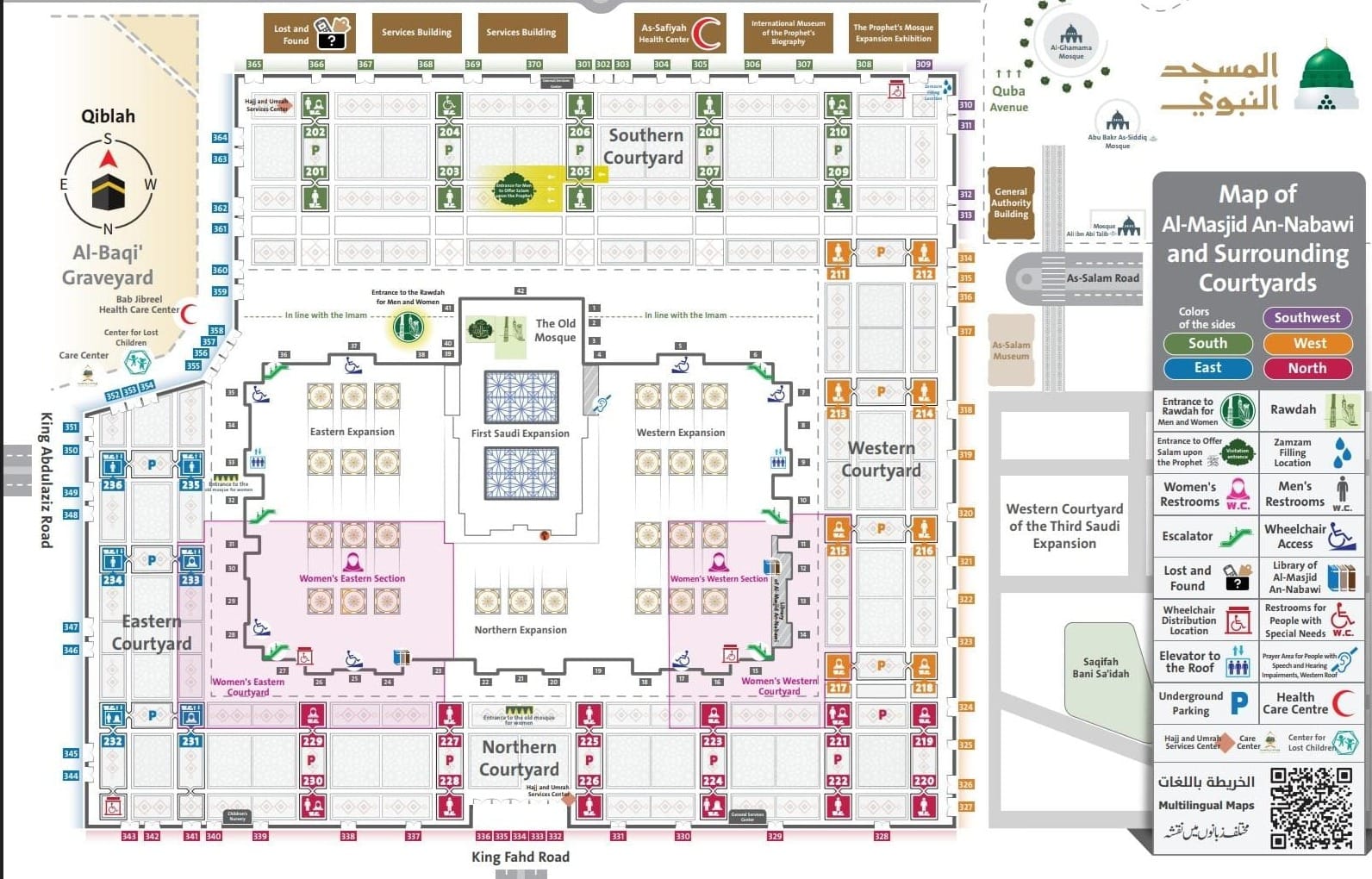
Spotlight on Al Salam Gate
Historical and Spiritual Significance
Bab Al-Salam (Gate of Peace) is one of the oldest and most revered entrances. Traditionally, pilgrims enter through this gate to perform Ziyarat, visiting the Prophet Muhammad's (ﷺ) resting place.
Passing through Al Salam Gate leads directly to Rawdah, the sacred area the Prophet (ﷺ) described as "a garden from the gardens of Paradise."
Architectural Highlights
- Elegant white marble
- Intricate gold calligraphy
- Majestic arches welcoming visitors with serenity
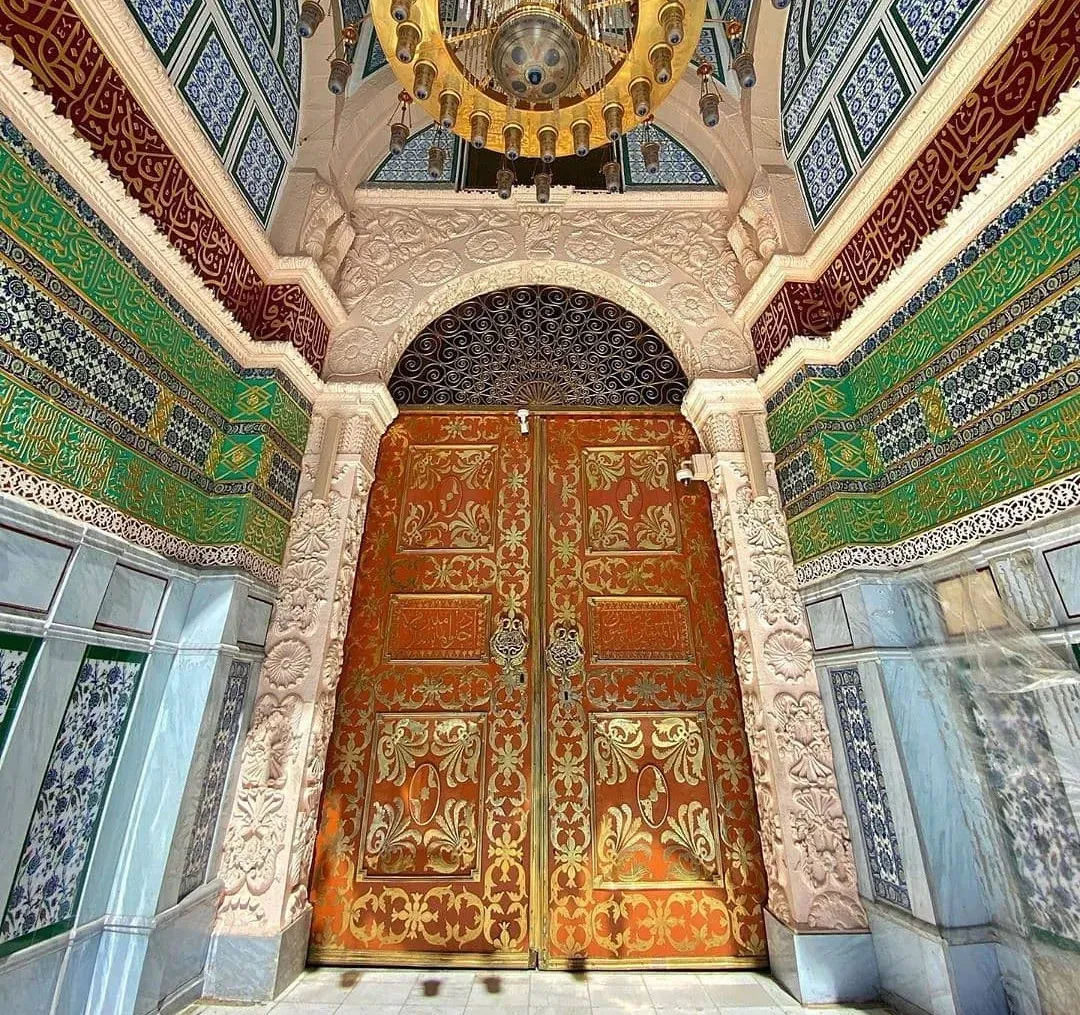
Complete List of Important Gates at Masjid Nabawi
Here is a list of some of the most important and frequently used gates:
- Bab Al-Salam (Gate of Peace) — Gate 1, leads to Rawdah.
- Bab Jibril (Gate of Gabriel) — Near the Prophet’s chamber.
- Bab Abu Bakr Al-Siddiq — Named after the first Caliph.
- Bab Omar Bin Al-Khattab — Named after the second Caliph.
- Bab Uthman Bin Affan — Close to ladies’ prayer areas.
- Bab Ali Bin Abi Talib — Entrance from the western side.
- Bab Al-Baqi — Leads toward Jannat Al-Baqi cemetery.
- Bab Al-Rahmah (Gate of Mercy) — Adjacent to Bab Al-Salam.
- Bab Al-Majeedi — A major modern entrance.
- Bab Malik Abdul Aziz — Important gate for ladies.
- Bab King Fahd — Part of the northern expansion.
- Bab An-Nisa (Gate of Women) — Primarily used by female worshippers.
- Bab Al-Tawba (Gate of Repentance) — Near the rear prayer areas.
- Bab Al-Siddiq — Gate 4, honoring Abu Bakr Al-Siddiq.
- Bab Al-Mustawda'a — Less crowded, quieter access.
Each gate plays a vital role in organizing pilgrim movement and offers a unique connection to Islamic history.
Which Gates Are for Ladies in Masjid Nabawi?
Specific gates are designated for women:
- Gate 13 (Bab Uthman bin Affan)
- Gate 17 (Bab Malik Abdul Aziz)
- Gate 25 (Bab Al-Salam, Ladies' Section)
- Gate 29 (Bab Al-Baqi)
Ladies must also follow a specific Rawdah booking system, typically using the Nusuk app.
Which Gate to Enter Rawdah for Men?
Men should use:
- Bab Al-Salam (Gate 1)
- Bab Jibril (Gate of Gabriel)
Rawdah entry now often requires a booking via the Nusuk app. For a detailed overview of Rawdah access timings, booking procedures, and insider travel tips, check out our Masjid al-Nabawi Guide 2025: Rawdah Access & Travel Tips.
Gate Number 4 of Masjid Nabawi
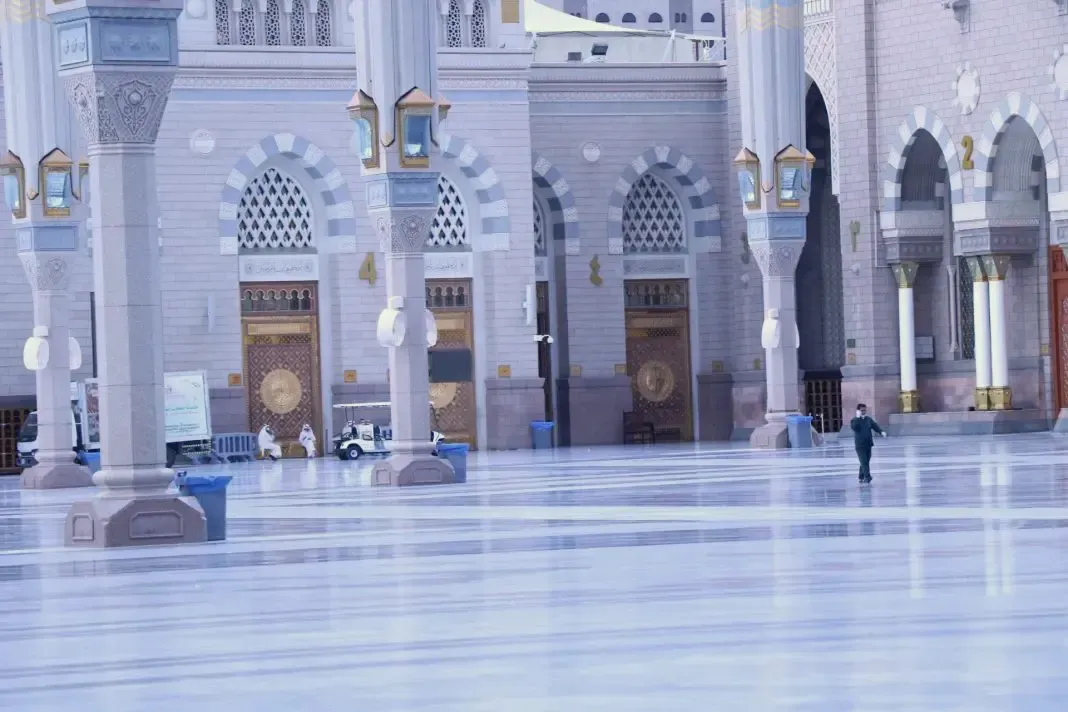
Gate 4 is known as Bab Al-Hijrah (Gate of Migration) Located in the southern wall of the Second Saudi Expansion, near Bab Al-Rahmah, it commemorates the historic Hijrah (migration) of Prophet Muhammad (ﷺ) from Makkah to Madinah in 622 CE. Originally, Bab Al-Hijrah had two portals, but recent expansions have added two more, making a total of four portals today.
This gate serves as a symbolic reminder of the profound journey that changed the course of Islamic history. Pilgrims passing through Bab Al-Hijrah are often inspired by the courage, sacrifice, and steadfast faith embodied in the Prophet’s migration.
Rawdah: A Piece of Paradise
Rawdah Al-Sharifah is the sacred area between the Prophet’s grave and pulpit. Praying within Rawdah is highly virtuous, and many scholars have emphasized the blessings of making Du'a and offering prayers in this blessed space. It is a place where supplications are believed to be readily accepted, and every moment spent there holds a deep connection to the Prophet (ﷺ) and his noble era.
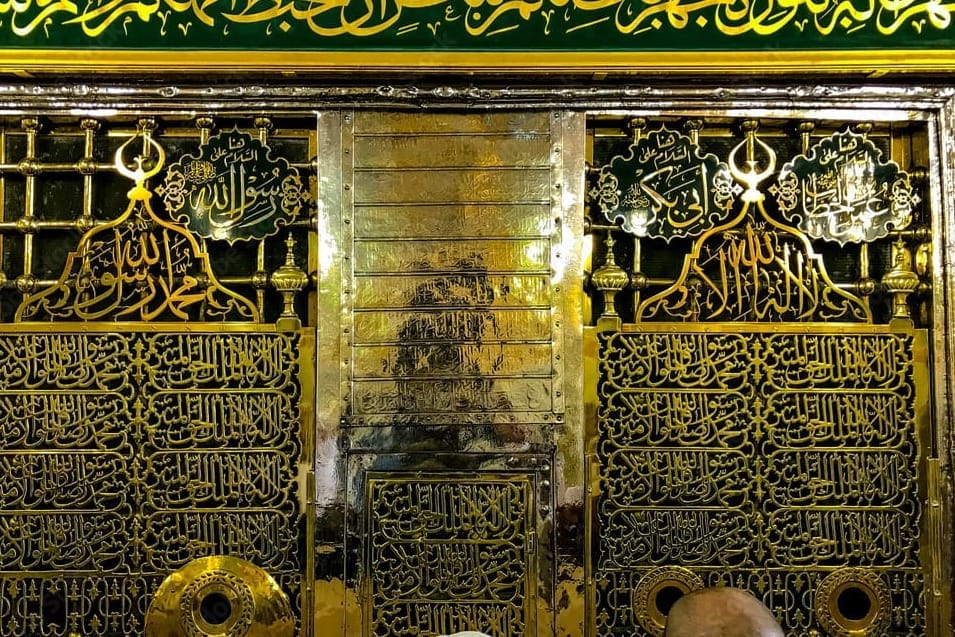
What to Recite in Rawdah
When visiting Rawdah:
- Perform two Rakats of voluntary prayer.
- Recite Salawat upon the Prophet.
- Make Du'a.
- Engage in quiet Dhikr.
Travel Tips for Visiting Masjid Nabawi Gates
- Plan Your Visit: Book Rawdah slots via the Nusuk app.
- Best Times: Early mornings or late evenings.
- Dress Code: Modest clothing for both men and women.
- Navigation Tip: Use the Hop-On Hop-Off Bus for easy access.
Walk Through the Tranquil Gates of Madinah
Masjid-e-Nabawi’s gates are not just architectural structures—they are timeless doorways that invite believers into a journey of faith, history, and devotion. Every step taken through these gates brings one closer to the legacy of the Prophet Muhammad (ﷺ) and offers an opportunity for reflection, gratitude, and spiritual renewal. Whether it is your first visit or a return after many years, the experience remains eternally profound.
May your journey to Masjid-e-Nabawi be blessed, your prayers accepted, and your heart filled with peace!

